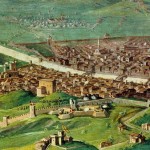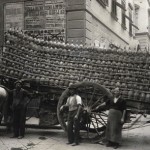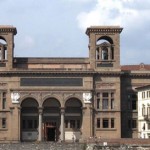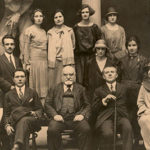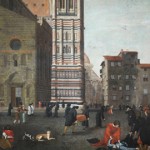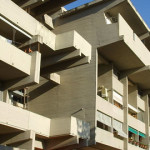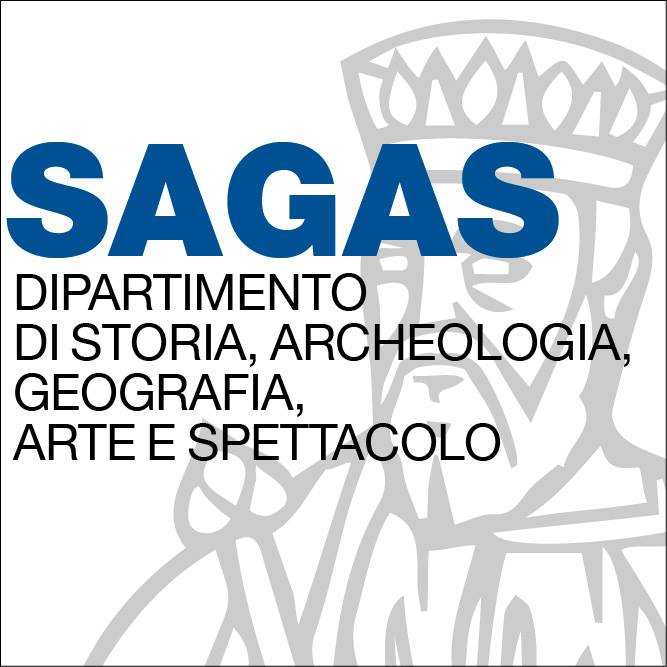Ilaria Becattini
Versione HTML: < http://duomo.mpiwg-berlin.mpg.de/STUDIES/study003/Becattini-Dalla-Selva-alla-Cupola.html >
Il saggio illustra le modalità di approvvigionamento di materiali lignei provenienti dalle foreste gestite dall’Opera di Santa Maria del Fiore durante l’edificazione della Cupola brunelleschiana e analizza il loro impiego per la realizzazione di elementi strutturali e opere provvisionali progettati dall’architetto fiorentino. I numerosi documenti inerenti ai contratti di appalto per le forniture di travi e i pagamenti stanziati in favore dei trasportatori hanno permesso di ricostruire il tragitto che il legname compiva dai luoghi di estrazione fino al cantiere e di individuare le varie figure predisposte alle operazioni di esbosco, sbozzatura dei tronchi e trasporto. Gli stessi documenti riportano i quantitativi di materiali lignei ordinati a ciascun appaltatore e, in qualche caso, persino le misure lineari e volumetriche che i vari componenti avrebbero dovuto avere; tali elementi si sono rivelati indispensabili per formulare alcune ipotesi sulla struttura e le dimensioni degli apparati provvisori. Il numero dei tronchi appaltati dall’Opera, suddiviso per anni e confrontato con le fasi costruttive, dà conto non solo del fabbisogno di legname espresso dal cantiere ma anche della situazione economico-politica della città durante il ventennio in cui fu completata la volta maggiore della cattedrale cittadina (eventi bellici, crisi finanziarie). All’interno del corpus documentario dell’edizione Gli anni della Cupola si trovano alcune delibere emesse dai Consoli dell’Arte della lana e dagli Operai in materia di gestione del patrimonio boschivo, le quali attestano l’avvenuta organizzazione di un apparato burocratico preposto alla tutela del patrimonio forestale. Questo tipo di documentazione ci restituisce, di riflesso, la difficoltà di coniugare lo sfruttamento intensivo della foresta a fini economici con le esigenze di sostentamento delle popolazioni di montagna e, allo stesso tempo, con la necessità di assicurare la rigenerazione di una risorsa tanto preziosa quanto esauribile.
The essay describes the conditions and process of the supply of timber from the forests managed by Opera of Santa Maria del Fiore during the construction of Brunelleschi’s dome. Furthermore it analyzes the employ of wooden structural elements in support of the building’s masonry and for scaffolding and other temporary apparatuses devised by the Florentine architect. The numerous supply contracts and payments allocated to the haulage contractors reveal the route followed by wooden materials from the forest to building yard and allow the identification of the various types of labor involved in the felling of trees, the preparation of logs and their transport. These documents specify the amount of timber ordered from each hauler and, in some cases, even the linear and volumetric dimensions of the wooden elements ordered by Opera. Such information has permitted the formulation of hypotheses about the structure and dimensions of temporary wooden scaffolding. The number of logs ordered, calculated year by year and related to the successive phases of the construction, reflect the changing requirements of wood for the building process as well as the political and economic situation of the city of Florence (wars, financial crises) during the two decades of the construction of the cathedral’s great cupola. The resolutions of the consuls of Wool Guild and the Opera wardens regarding the forest administration testify to the existence of a bureaucratic structure charged with overseeing the woodland heritage. These sources vividly render the difficulties encountered in reconciling the intense exploitation of the forest for economic ends with the livelihood of the local population and, at the same time, with the necessity of ensuring the regeneration of a precious but exhaustible resource entrusted to the Opera’s […]
Download Pdf
Da: http://duomo.mpiwg-berlin.mpg.de/STUDIES/studies_ita.html


